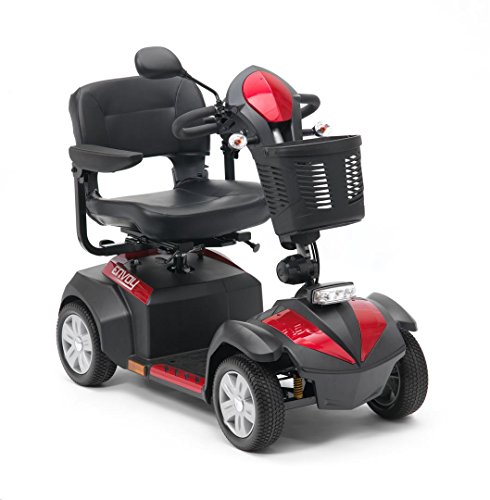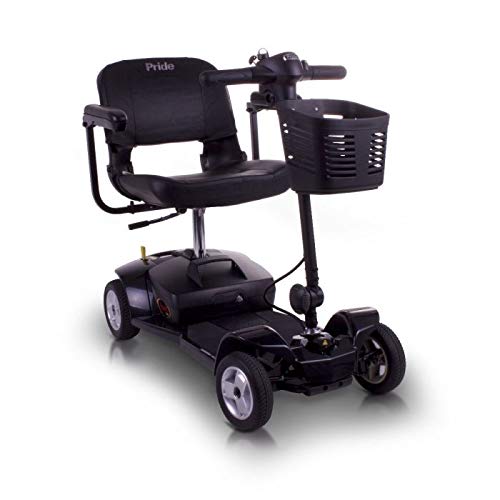The 10 Most Scariest Things About Mobility Scooters On Pavements Law
페이지 정보

본문
Mobility scooters are a common mode of transportation for people who need a safe and efficient method of navigating their surroundings. However, it is essential for users to know and comprehend the local rules and regulations pertaining to pavement travel.
 Mobility scooters can be operated on sidewalks or pedestrian walkways. They must still be respectful of pedestrians and be cautious of speeds that could hinder traffic.
Mobility scooters can be operated on sidewalks or pedestrian walkways. They must still be respectful of pedestrians and be cautious of speeds that could hinder traffic.Class 2 and 3 scooters
If you are thinking about purchasing a mobility scooter yourself or a loved one who is elderly, there are many different options to choose from. It is essential to make sure that you pick the right one, as there are limits on size and turning radius when travelling with it on public transportation, as well as speed limits on pavements. It is crucial to understand the difference between Class 3 and Class 2 scooters as they are made for different environments and require different requirements.
Class 2 scooters have a maximum speed limit of 4mph, and are specifically designed for indoor use. They are ideal for shopping trips, pavement travel and for navigating urban areas where space is restricted. In contrast to Class 3 Scooters, they do not require registration with the DVLA. They cannot be used on roads (except in areas where there isn't pavement). Class 2 mobility scooters are a great option for those who frequently travel short distances or for those who are concerned about their weight.
For those who require a more flexible Mobility Scooters On Pavements Law solution, the Class 3 scooter can be used on the road with speeds up to 8mph. They should be equipped with a way of limiting their speed to 4mph when on the pavement, and they should not be driven on bus lanes or on 'cycle only' cycle routes. Dual carriageways should be avoided, but if they are necessary for safety or if you are equipped with an amber flashing lamp then you are able to use them.
Class 3 scooters are more expensive than Class 2 models because they must be able to meet higher specifications for road use. This means that they must include efficient braking systems, lights, indicators and rear view mirrors. This extra functionality and safety is reflected in the price however, it's an investment that could provide an increase in independence for those not capable of driving a vehicle or walk for long distances. It is also worth considering that you may need to travel a longer distance to meet friends or family in some circumstances, so the extra distance could be worth it in the long term.
Pedestrians
Mobility scooters are a practical and safe way for people who have limited physical capabilities or sensory abilities to get around. While they offer a great deal of independence however, they must be operated with care to protect the safety of other users as well as to avoid breaking any laws.
One of the most common questions regarding mobility scooters is whether they can be used on roads. The answer varies based on the local laws and ordinances. Most municipalities restrict mobility scooters from using city streets and sidewalks. Mobility scooters aren't built to keep up with traffic. This could cause an accident and severely hurt the rider.
On sidewalks, mobility scooters must operate at a rate that is in line with pedestrians. They must also give way to pedestrians and give an audible warning in the event that they intend to cross. It is also important that scooter users comply with all posted signs and regulations pertaining to pedestrian routes and crossings. This will improve the safety of scooter users and pedestrians.
Class 2 scooters are typically used for pavement use and should have a speed limit of 4 mph. As such, they are more dangerous to pedestrians than larger scooters. It is important that scooter drivers drive with care and are aware of other users. Additionally, they must be sure to park their scooter in areas that do not hinder pedestrians' access or traffic.
As general guidelines, you should never operate a mobility scooter on any trail or path that is designated for bicycles. Many state parks and outdoor spots also have restrictions on the use of motorized scooters. These restrictions are designed to protect the environment and avoid accidents that may harm or hurt scooters or other pedestrians. In addition, most cities have laws that prohibit the operation of scooters on roads with high traffic.
Parking
Mobility scooters are an excellent option to give freedom and independence to thousands of people across the UK. However, there are laws that must be adhered to when using these vehicles. These include respecting parking regulations and yielding to pedestrians and ensuring the safety of other users. The guidelines ensure that mobility scooters are properly maintained and do not hinder pedestrian walkways or sidewalks. It is also important to be extra cautious when transitioning from pavement mobility scooters for sale to the road. This is particularly true in the absence of dropped kerbs near by.
In general scooters should not be used on roads unless they are class 3 and are specifically designed for use on roads. They should never be utilized on cycle or bus lanes, and should not be driven at speeds exceeding 4 mph. If you plan to use your mobility scooter while driving it is a great idea to outfit it with reflective materials and lighting to be seen more easily.
It is recommended to wear a helmet, even although it's not required. This will make you more noticeable to other drivers, especially when the lighting is poor. Avoid using headphones or mobile phones because they can distract you. Wearing reflective clothing or putting up a safety sign can help you to be more visible.
It is also important to maintain a reasonable speed when using your scooter on sidewalks and pedestrian pathways. This will ensure the safety of other users and help avoid accidents.
There is no need for a license to operate a mobility scooter, but you should be aware of the local laws before using one. In most areas, you can use them on sidewalks and designated pedestrian walkways, but you should not use them on roads. You should always obey traffic signals and follow signs, and wear a helmet to ensure your safety.
Many people aren't aware of the laws governing mobility scooters within their neighborhood or city. There are many sources available to help you determine the proper regulations for your area.
Accelerate
Mobility scooters cannot be operated at speeds higher than the speed of normal pedestrians using sidewalks. They must also give pedestrians the right to use the right of way and signal prior to crossing over or passing them. Furthermore, they should be equipped with vital safety features and be aware of other pedestrians particularly those who have difficulty hearing or seeing. The use of reflective clothing or accessories is recommended to increase visibility in poorly illuminated or dark areas.
Many areas have established speeds for mobility scooters on sidewalks and in other pedestrian zones. These limits are often set at a speed equal to the speed of a walk that is safer for scooter drivers and pedestrians. Scooters must also be outfitted with reflectors and functional lights to make them visible in low-light conditions or in the dark.
Local governments may require scooters to be registered and insured like motor vehicles. This ensures that they are in compliance with local regulations and minimizes the chance of accidents. Most mobility scooters were not designed to be used on roads, and putting them on roads increases the chance that other road users could be injured or damaged.
While there aren't any laws prohibiting the use of mobility scooters on road or pavement scooters on roads however, it is generally recommended to only use them when absolutely necessary, and not at speeds that could put a risk to pedestrians or other vehicles. Priority should be given to pedestrians, and especially those who have visual or hearing impairments. They might not be aware of you until it's already too late.
Mobility scooters must be kept at a safe distance away from other vehicles. If they are going to be used on roads, they must be fitted with a tyre pressure sensor or some other device that will alert drivers to low pressure. Regular inspections are also essential to ensure they're in good working condition.
 Although it's not legally required to have a driving license for a scooter, some individuals choose to obtain a learner's permit to assist them in gaining experience and get comfortable operating this kind of vehicle. It's a great way to practice riding and gain confidence before moving to a full-time license. The requirements for a learner's permit may vary but usually they consist of a driving test, as well as learning the basic rules of the road and regulations.
Although it's not legally required to have a driving license for a scooter, some individuals choose to obtain a learner's permit to assist them in gaining experience and get comfortable operating this kind of vehicle. It's a great way to practice riding and gain confidence before moving to a full-time license. The requirements for a learner's permit may vary but usually they consist of a driving test, as well as learning the basic rules of the road and regulations.- 이전글Answers about Car Batteries 24.06.28
- 다음글The Fastest Way To 출장마사지 Your Business 24.06.28
댓글목록
등록된 댓글이 없습니다.


 블로그체험단 바로가기
블로그체험단 바로가기